TECHNICAL CONTROL MEANS
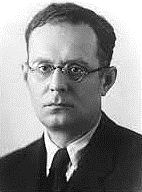 |
|
Dmitry V. Zernov |
Laboratory No. 2 was established by the order of V.A. Trapeznikov, Director of the Institute of Automation and Remote Control (the USSR Academy of Sciences), in 1952 as the Laboratory of Electronics. Dr. Sci. (Phys.–Math.), Prof. Dmitry V. Zernov became its first Head.
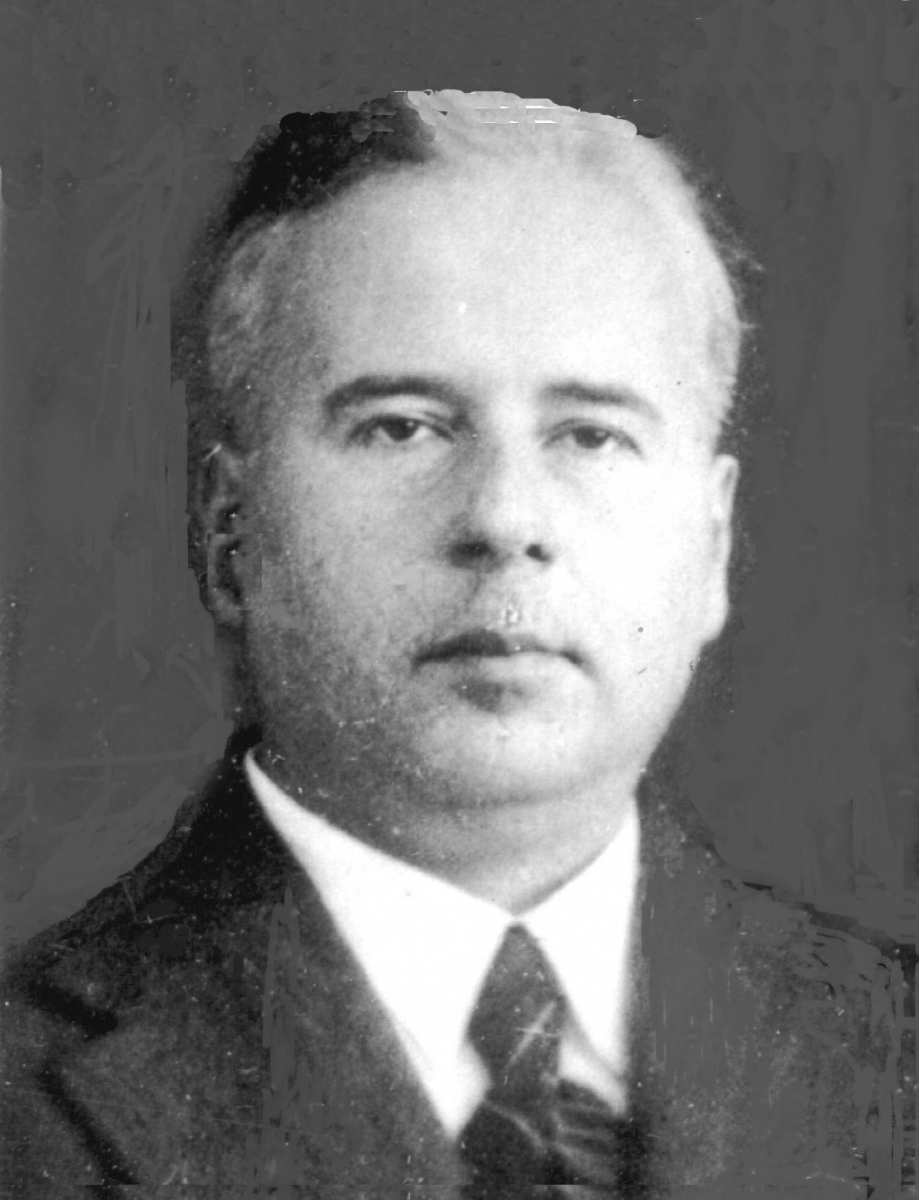 |
|
Vladimir L. Lossievsky |
In 1958, the Laboratory staff moved to another research institute, and Dr. Sci. (Eng.), Prof. Vladimir L. Lossievsky was appointed Head of Laboratory No. 2. The Laboratory was also renamed the Laboratory of Automatic Actuators.
During that period, responsible works were carried out to automate special facilities of the USSR Ministry of Medium-Sized Machine Building and typical oil fields. An original device was designed to measure the oil well flow rate (I.S. Mezin). In 1958, a high-precision milliliter dosing unit and a special electric drive system were developed. They were used to create an automatic regulating titrator vital for the chemical industry (I.S. Mezin and M.M. Belyaev).
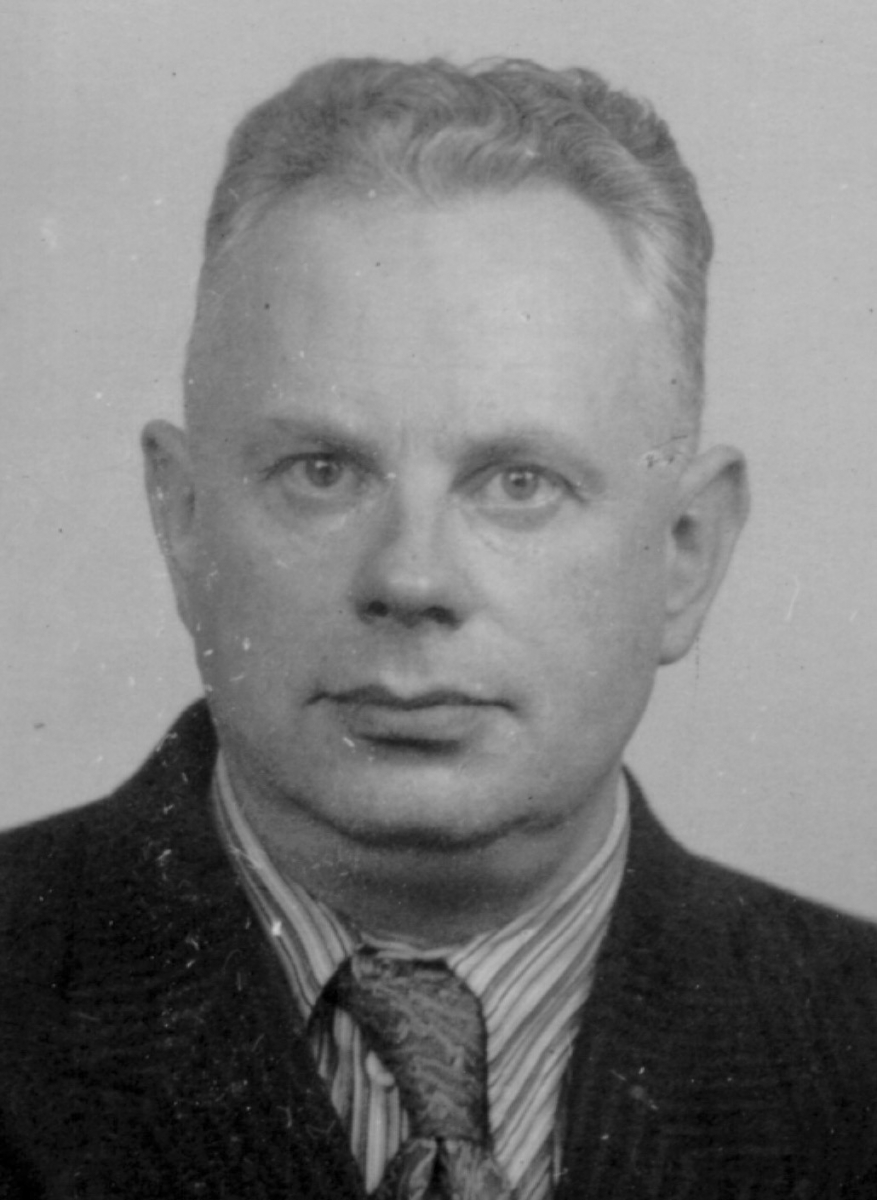 |
|
Igor S. Mezin |
In 1966, Dr. Sci. (Eng.) Igor S. Mezin became Head of Laboratory No. 2, and the Laboratory led R&D works on the fluidics technology. A group of the corresponding experts from Laboratory No. 11 moved to Laboratory No. 2 and continued developing fluidic control systems based on printing (L.A. Zalmanzon, A.M. Kasimov, and others). A series of artificial respiration devices on fluidic elements were designed and implemented in medicine together with the All-Union Research Institute of Medical Instrumentation (VNIIMP) (V.G. Gradetsky and V.N. Dmitriev). Also, the basic design concepts of fluidic elements and modules (SMST-2, Volga, AIST (A.M. Kasimov, Yu.V. Vansky, V.M. Larionov, and others) were created and transferred to industry.
I.S. Mezin led the development of a universal fluidic complex of technical control means (UNIKUS) (I.S. Mezin, M.M. Belyaev, A.N. Shubin, and A.A. Khitrovo). That complex was used to construct a trained control system for a multiposition robot. The system successfully operated a horizontal forging machine and an electric heating unit in heavy shop conditions.
I.S. Mezin initiated R&D works on the reliability of fluidic devices (A.N. Shubin) and the creation of pneumoelectric and electro-pneumatic transducers, including portable analog pneumoelectric transducers for visualizing and studying the dynamics of pneumatic signals in pneumatic circuits (M.M. Belyaev, A.A. Khitrovo, and B.I. Pankratov).
In 1982, Cand. Sci. (Eng.) A.N. Shubin was appointed Head of Laboratory No. 2.
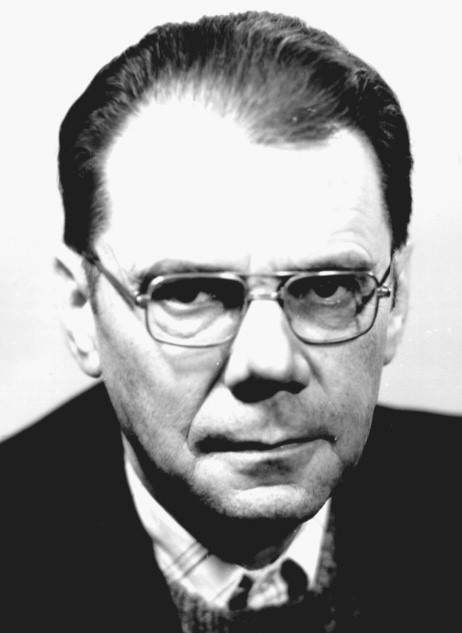 |
|
Alexey A. Tal |
In 1983, the Laboratory was enlarged with a research group from Laboratory No. 11, experts in industrial pneumatic automation. Led by Head of Laboratory No. 11, Dr. Sci. (Eng.) Alexey A. Tal, the group developed a universal system of industrial pneumatic automation elements (USIPAE) in 1959. The system became the main element base of domestic pneumatic instrumentation and was generally recognized as the best in the world. Based on the USIPAE, Tizpribor (Moscow) serially produced devices of the START system, which formed the foundation of the pneumatic branch in the State System of Industrial Automation Equipment (SSE). In 1964, Institute’s employees M.A. Aizerman, A.A. Tal, T.K. Berends, T.K. Efremova and A.A. Tagaevskaya received the Lenin Prize for developing and implementing the START system and USIPAE elements. In 1975–1977, this group also developed two modular aggregate systems, TSYKL (jointly with Tizpribor) and KOMPAS (together with Pnevmoapparat (Moscow)), to control cyclic processes. The TSYKL system included fluidic-membrane devices (A.M. Kasimov, T.K. Berends, and others).
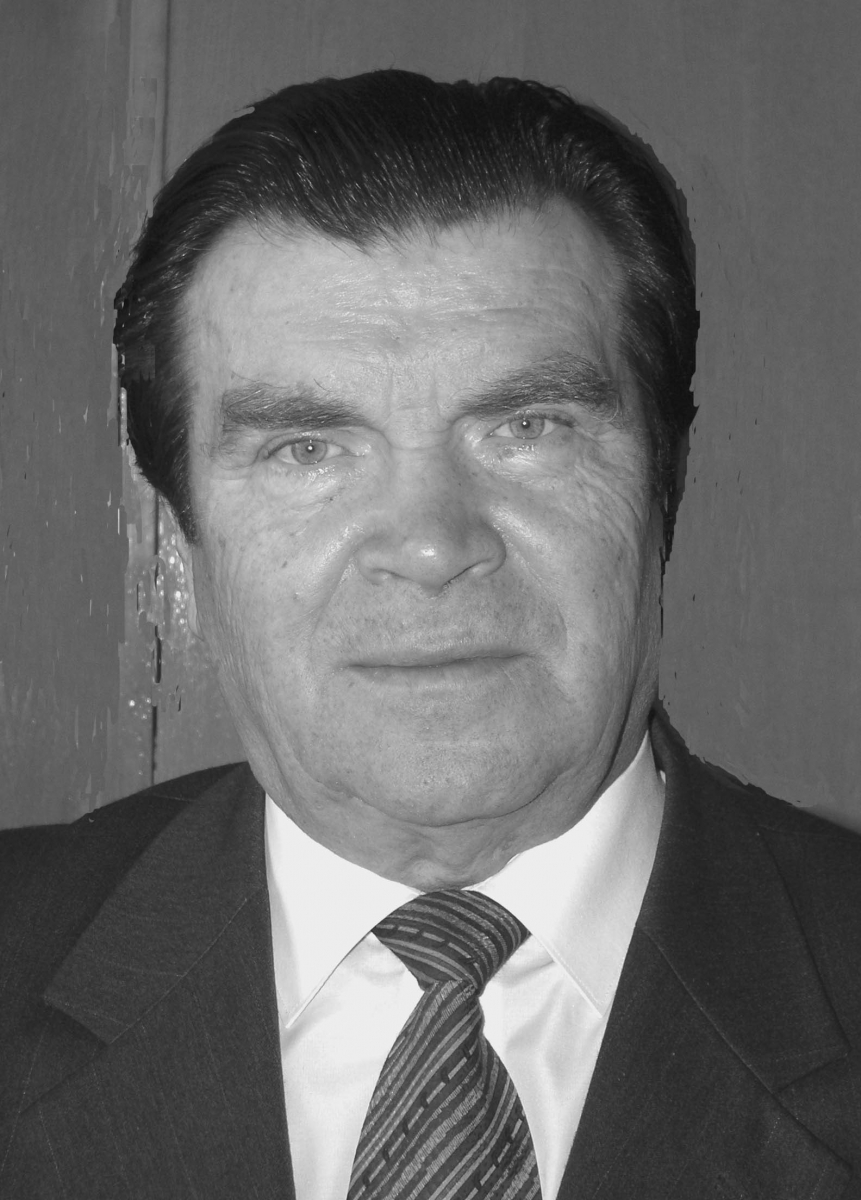 |
|
Anatoly N. Shubin |
Laboratory No. 2 was soon renamed the Laboratory of Gas-Hydrodynamic Automation Means. Its employees continued R&D works on improving membrane and fluidic-membrane devices. Jointly with the Central Research Institute of Complex Automation (TsNIIKA) and Tizpribor, the Rezhim-1 technical means complex was created in 1983. The complex was intended for the centralized monitoring and control of continuous industrial processes (T.K. Efremova and A.A. Tagaevskaya). The complex demonstrated the highest degree of aggregation.
In 1986, Laboratory’s pneumoelectric and electro-pneumatic transducers were used to create object communication devices (OCD) for combined pneumoelectronic control systems (V.I. Chernyshev and M.E. Limonova).
The R&D works showed the reasonability of designing gas and liquid flowmeters without moving parts based on the fluidics technology. Fluidic flowmeters with frequency output were created for a high-parameter coolant (jointly with the Kurchatov Institute of Atomic Energy). They successfully passed resource tests at the Leningrad nuclear power plant (A.M. Kasimov and V.V. Vansky). The household gas fluidic meters based on this principle are currently produced for housing and communal services.
The fluidics technology found application in agriculture. In 1987–1988, an automated water distribution and irrigation system was developed for reconstructed irrigation facilities using fluidic liquid supply principles in open channels (Dr. Sci. (Eng.) L.A. Zalmanzon, jointly with Mosvodokanal). The system was successfully tested and put into operation.
During that period, a control system was developed for a mobile platform with aerostatic supports on the aircraft assembly conveyor (V.S. Bezmenov). In the 1990s, the Laboratory studied environmental problems and particularly conceptualized the design of automatic control systems for wastewater purification processes in electroplating facilities based on specialized pneumatic dispensers of chemical agents (V.S. Bezmenov and A.A. Tagaevskaya). The control system was successfully tested at several enterprises.
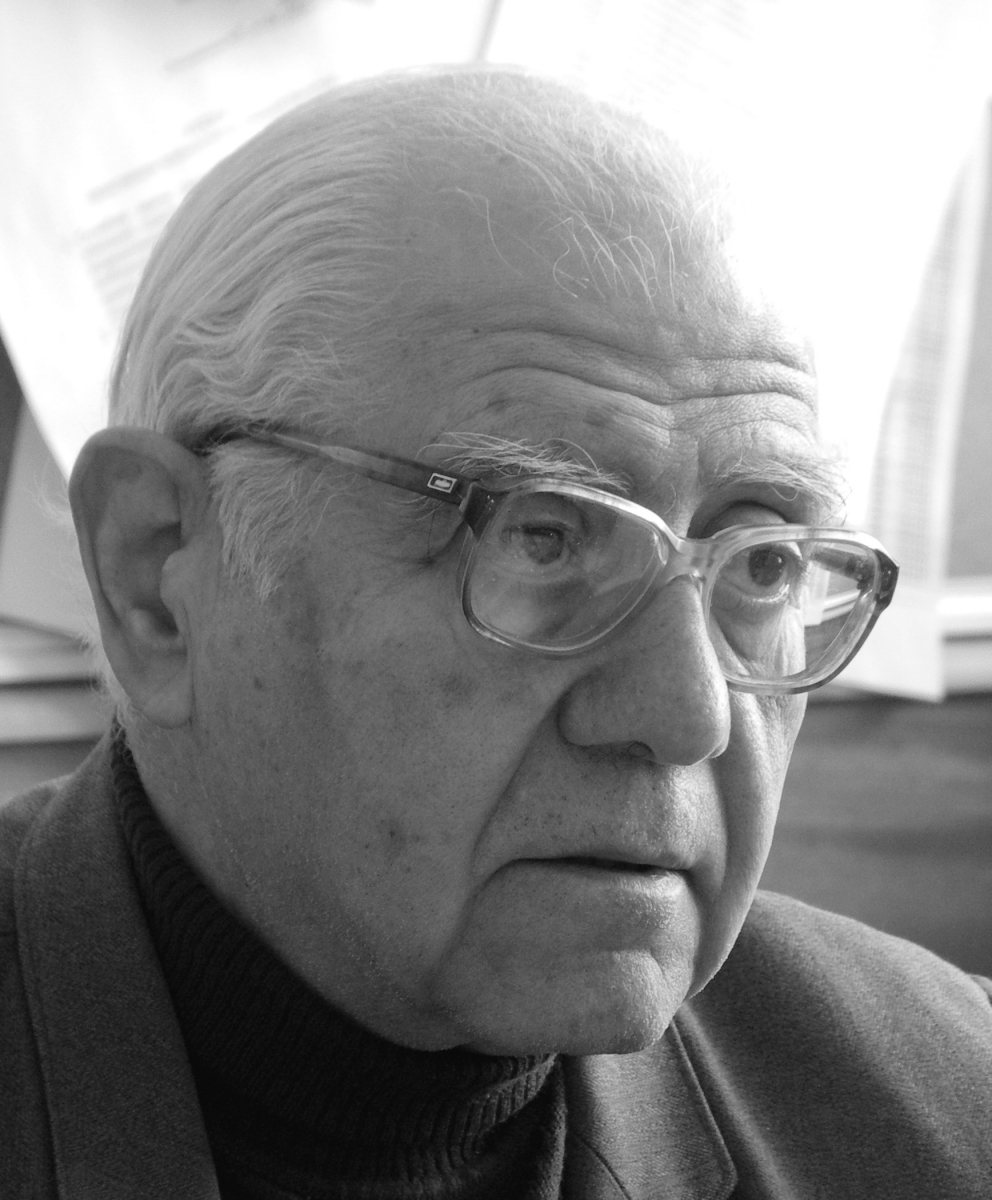 |
|
Asim M. Kasimov |
In 2005–2020, the Laboratory was headed by Dr. Sci. (Eng.) Asim M. Kasimov. Since 2020, its Head has been Dr. Sci. (Eng.) Andrey V. Balabanov. The laboratory continued improving fluidic control systems and developing instrumentation to study the statics and dynamics of pneumatic devices and circuits.
Note the following R&D works in recent years:
– The development of differential flow rate measurement methods for liquid products. New methods with extended dynamic ranges were proposed (fluidic, fluidic-vortex, and compensation flowmeters). The latter flowmeters underlie the promising research of multi-component two-phase flow measurement (M.M. Belyaev, A.M. Kasimov, and A.I. Popov).
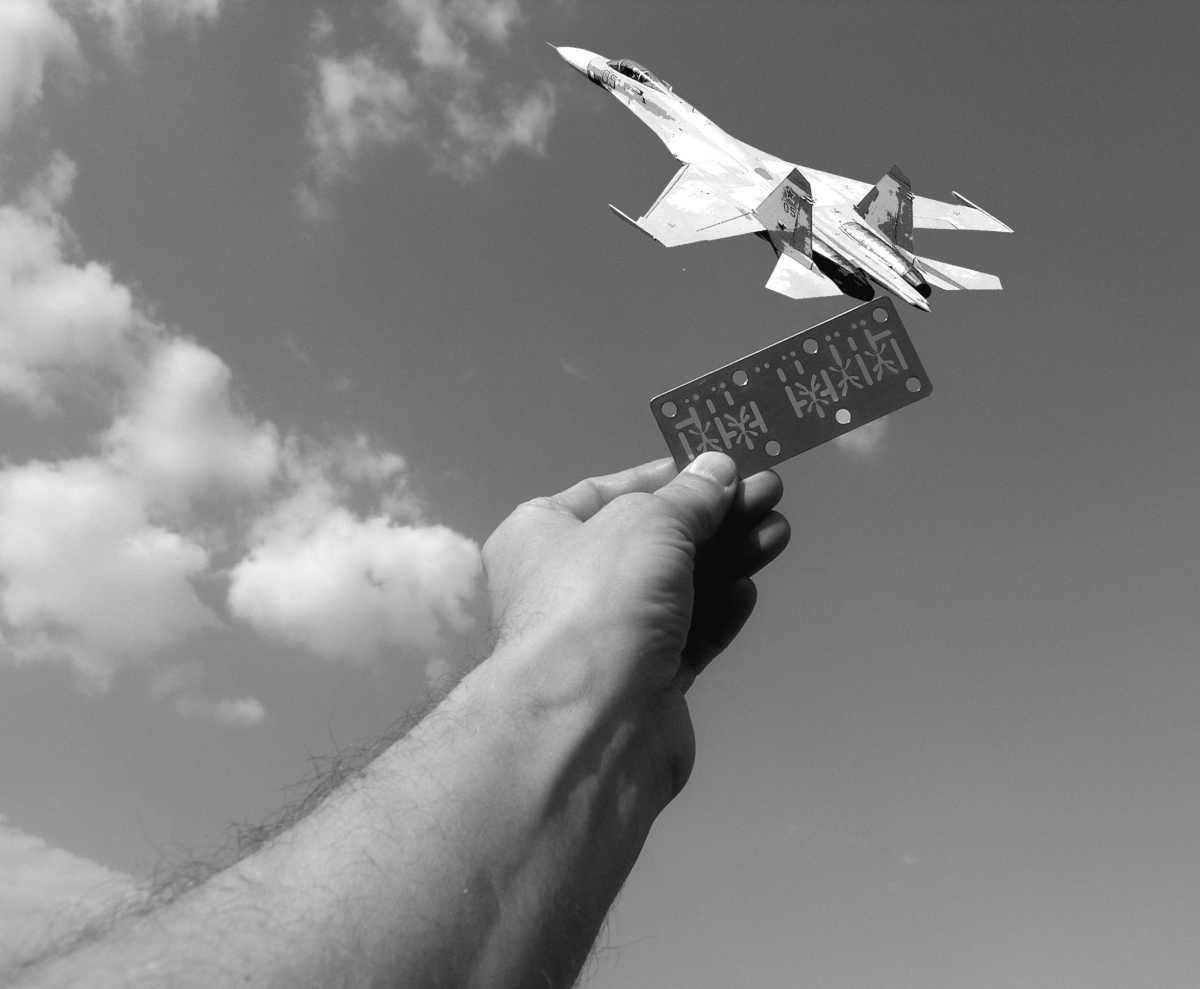 |
|
Jet elements of aircraft engine control systems |
– The development and serial production of fluidic automation means for the parameter control of aircraft engines (22 controllers on 12 types of engines). The high reliability and economic efficiency of such systems were confirmed. The mean time between failures of the fluidic equipment exceeded 20 million flight hours. (A.M. Kasimov and A.I. Popov).
– The creation of pneuzmatic automatic dosing systems (ADSs) for liquid products. The pneumatic automatic dosing methods and technical means were analyzed for liquids. A new class of universal closed-loop ADSs was developed (V.S. Bezmenov, T.K. Efremova, and A.A. Tagaevskaya). The systems have one output parameter (liquid flow rate at the output) both for the batch and continuous dosing processes.
– The development of an original pneumodynamic automatic control principle for the tightness of products from viscoelastic materials. The principle is based on measuring the rate of pressure increase in the controlled product volume after a sequence of technological operations of the control cycle (V.S. Bezmenov).
– Energy-saving technologies of natural gas and heat in the industry and communal services promise significant savings in natural gas consumption in Russia. The evolution of gas heat generator automation systems was analyzed, and the static and dynamic characteristics of radiator thermostats for gas boilers up to 100 kW were studied. The results of those R&D works were tested in the Moscow region for two heating seasons and are being prepared for implementation. A fluidic heat brake was proposed based on theoretical studies. It controls the temperature in the room and reduces the residual heat transfer share to 15–20% (A.I. Popov).
– The design of technological processes to produce fluidic elements and devices by casting from plastics. Such processes increase the degree of integration of elements. For the first time, fluidic elements and devices were produced by the 3D technology. Therefore, this technology has good prospects for fluidic elements and devices (Cand. Sci. (Eng.) A.V. Balabanov).
Current research is based on fundamental results in theoretical gas-hydrodynamics, automatic control theory, and theoretical mechanics. Research achievements include methods of extending the dynamic measurement range of fluidic, fluidic-vortex, and compensation flow meters of liquid media. The performance of fluidic control systems is considerably improved. Measurement methods are developed for multiphase liquid flows.
The Laboratory has experience in creating highly reliable fluidic controllers for aircraft gas turbine engines. Energy-saving technologies are developed to increase the efficiency of natural gas and heat in heating systems of residential and industrial buildings.
In 2017, Laboratory No. 2 was enlarged with leading experts in technical automation means from Laboratories No. 14, 15, 48, 54, and 62. It was renamed the Laboratory of Technical Control Means. The Laboratory develops the theory and methods of designing hardware, software, and technical control means and complex information and control systems.
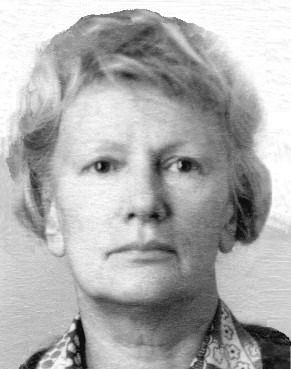 |
|
Natalia P. Vasilyeva |
Laboratory No. 14 was established in 1977 by Dr. Sci. (Eng.), Prof. Natalia P. Vasilyeva (later Honored Scientist of the Russian Federation). In the 1980s, the Laboratory developed the first Russian industrial series of magnetic logic elements (ELM-50 and ELM-400). They were widely used in the civil and military sectors. A group of former employees of Laboratory No. 14, led by Dr. Sci. (Eng.) Sergey I. Kasatkin, Honorary Man of Science and Technology of the Russian Federation, develops elements based on fundamental research of magnetic nanostructures: register storage devices on flat magnetic domains, magnetic disks and tapes, and magnetic field transducers using magnetoresistance (MR) effects.
In recent years, the group theoretically and experimentally studies the nanoelements of magnetic spintronics based on metallic multilayer MR nanostructures. Multilayer thin-film MR elements (magnetic field and current transducers, biosensors, etc.) are investigated. Measuring benches are developed to study the nanoelements. Magnetic straintronics elements combining magnetostriction and magnetoresistance are investigated. Members of this group participate in developing devices based on the magnetic field and current transducers jointly with Scientific-Manufacturing Complex (SMC) “Technological Centre” (Zelenograd).
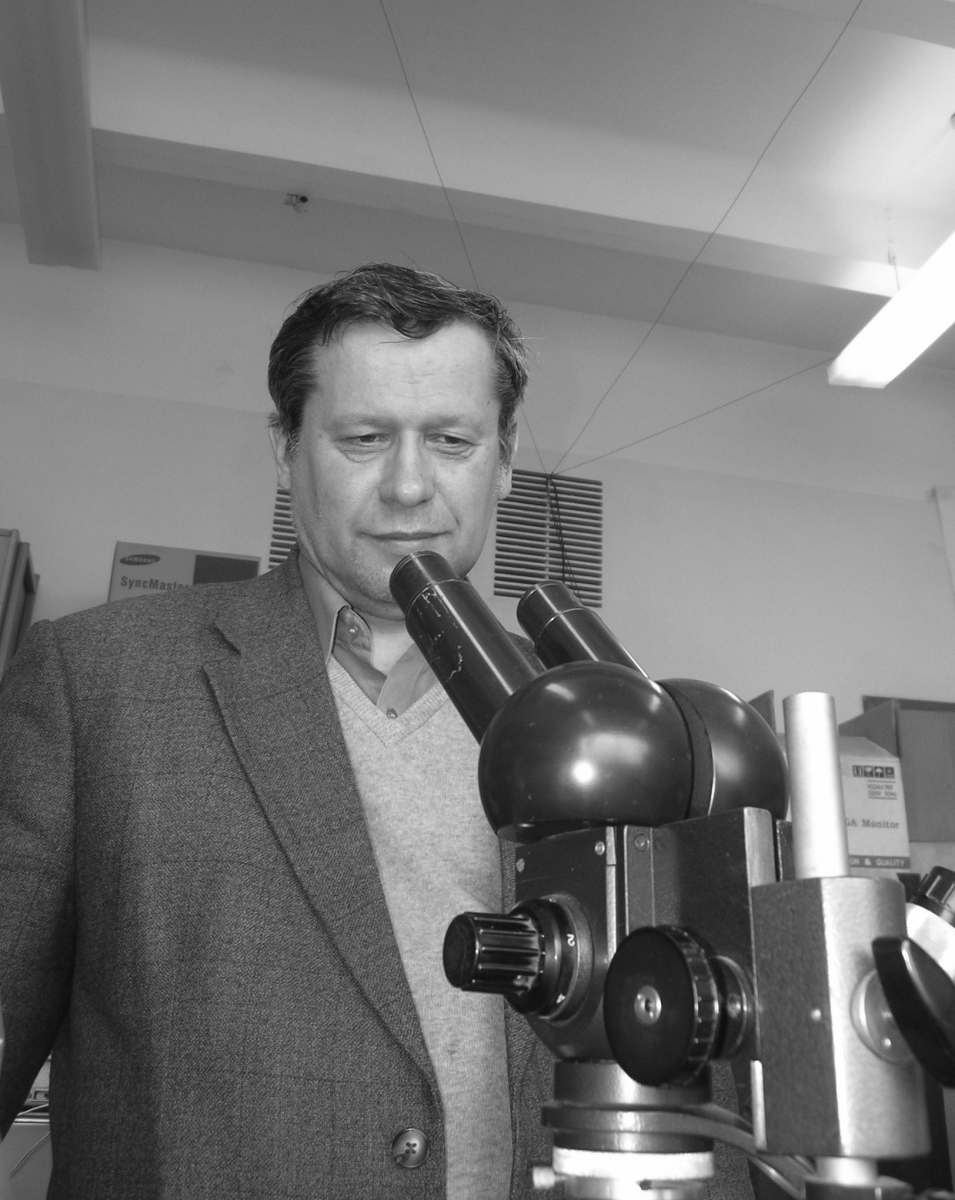 |
|
Sergey I. Kasatkin |
Development and investigation of MR nanoelements. Today, leading companies in the world actively develop and produce nanoelements with anisotropic magnetoresistance (AMR) reaching 1.5–2.5%, spin-ventral magnetoresistance (SVMR) reaching 10–15%, and spin-tunnel magnetoresistance (STMR) exceeding 500%.
Elements with AMR effects. Employees of Laboratory No. 14 (the group now working in Laboratory No. 2) developed multilayer and single-layer AMR transducers of magnetic field and current. Also, they proposed new control methods and designs and analyzed their performance. At present, the group members implement these transducers in SMC “Technological Centre.”
Elements with SVMR and STMR effects. The group participates in developing elements based on SVMR and STMR effects jointly with SMC “Technological Centre.”
Using the theory of micromagnetism, the group studied both types of nanoelements with application to memory and logic elements and magnetic field transducers and proposed new control methods and their designs. In recent years, SVMR and STMR nanostructures and nanoelements based on them were experimentally studied jointly with SMC “Technological Centre.” Mockups of devices with AMR transducers were created. A mockup was created using the principles of magnetic location. It is based on the developed algorithm and mathematical support for determining the spatial and angular coordinates of the magnetic dipole. Such devices are applied in training simulators, 3D computer manipulators, medical devices, the non-destructive remote testing of materials and products, the detection of objects with magnetic fields, etc. As discovered, AMR heads can be used for the contactless diagnosis of objects by their magnetic fields. Magnetic spintronics, a branch of nano- and microelectronics to create elements with a fixed electron spin direction as a working parameter, is currently one of the most actively developed in the world. This branch belongs to science-intensive dual-use technologies determining the scientific and technological potential of the country. The group continues the research of new types of SVMR and STMR nanostructures as well as the development of MR nanoelements based on them and devices with these nanoelements. A new and promising area of magnetic straintronics, studied in the Laboratory, involves magnetostrictive and MR effects to create elements measuring mechanical stress and pressure.
Dr. Sci. (Eng.), Prof. V.V. Zotov (Laboratory No. 15) developed design principles for several types of semiconductor multifunctional sensors (Z-sensors). They have no analogs in the world practice. Currently, some types of Z-sensors are produced in small batches and supplied to consumers. First of all, they include magnetosensitive Z-sensors and ultraviolet Z-sensors (E.P. Vinogradova).
Starting from the mid-1960s, Dr. Sci. (Eng.), Prof. Vladimir Yu. Kneller led research in the two interconnected areas:
1) a theory and principles to design alternating current (AC) conversion and automatic measurement means;
2) a general structural theory of measurement data conversion.
(V.Yu. Kneller first led a research group within Laboratory No. 15 and then became Head of Laboratory No. 62 created by him. The founder and first Head of Laboratory No. 15 was Dr. Sci. (Eng.), Prof. Dmitry I. Ageikin.)
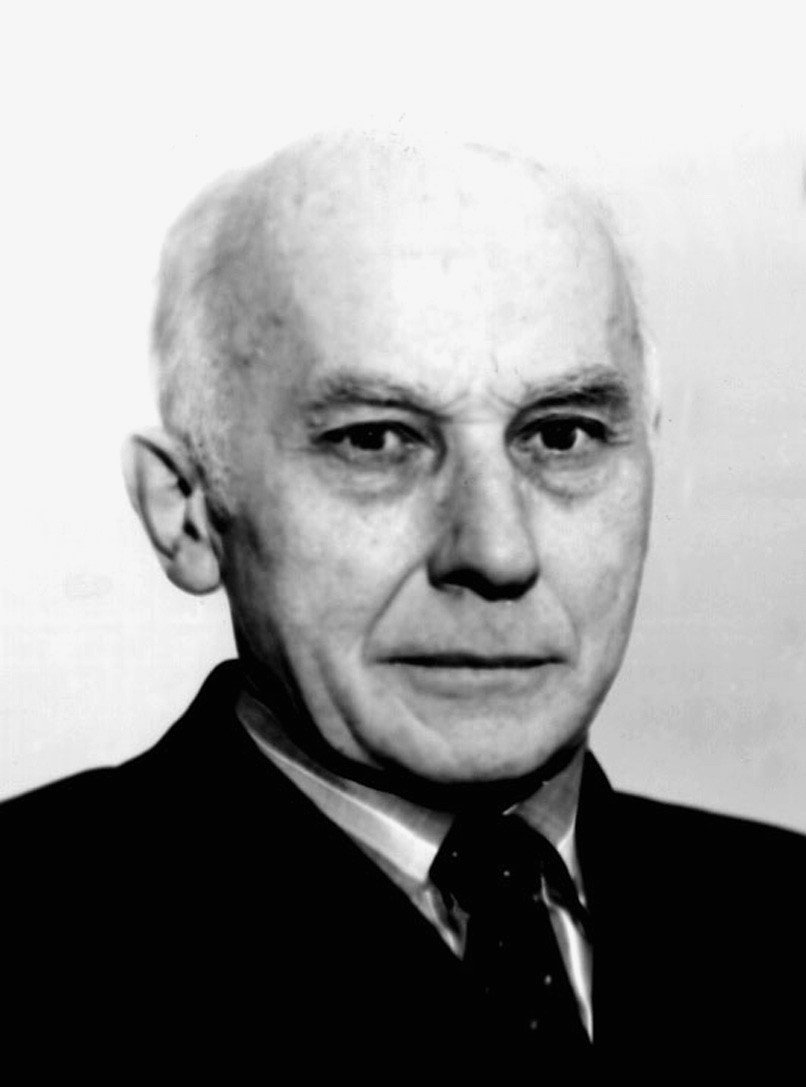 |
|
Dmitry I. Ageikin |
The first research area mainly considered automatic transducers and meters of passive complex AC quantities. The huge prospects opened by such automation means, in many respects not realized until now, were timely observed and properly appreciated. At each development stage, the most topical problems were revealed and investigated (e.g., the design principles of fast digital meters for passive complex AC quantities with balanced circuits, microprocessor digital meters for passive complex AC quantities, and ways to improve them; multipurpose digital meters without balancing; virtual meters and analyzers for passive complex AC quantities). Their original solutions were found, and next-generation measuring devices were constructed. Much attention was paid to the general scientific grounds for designing a wide class of transducers for two- and multidimensional quantities. Dr. Sci. (Eng.), Prof. V.Yu. Kneller, Dr. Sci. (Eng.) Yu.R. Agamalov, Cand. Sci. (Eng.) L.P. Borovskikh, and Cand. Sci. (Eng.) D.A. Bobylev made the greatest contribution to developing that area.
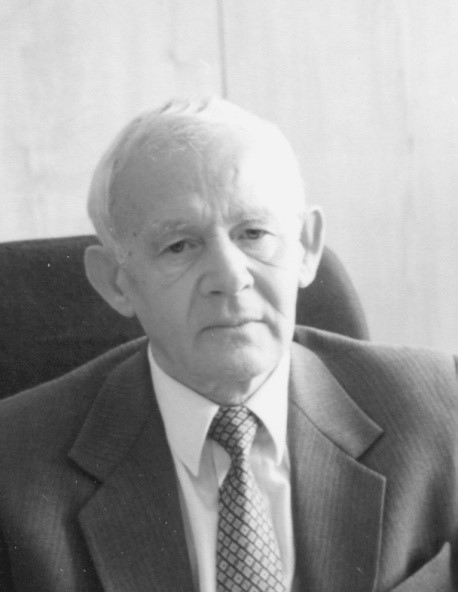 |
|
Vladimir Yu. Kneller |
Note the following basic results in the first research area:
‐ A new approach was proposed to balance AC measuring circuits, the so-called coordinated balancing. A theory and principles were developed to design high-speed digital AC devices. Serial wide-purpose devices were created (R5010 and R5058). Their performance characteristics exceeded the best world analogs of that time (V.Yu. Kneller and Yu.R. Agamalov).
‐ New transistor AC switches were developed and patented in leading European countries. The measuring circuits of digital bridges (R5010 and R5058) were implemented on their basis (Yu.R. Agamalov).
‐ Generalized analysis and synthesis methods were developed for balanced AC measuring circuits. New subclasses and a set of circuits with new features and properties were synthesized (V.Yu. Kneller, Yu.R. Agamalov, and Dr. Sci. (Eng.) Yu.D. Khastsaev).
‐ Theoretical foundations were developed for the automatic meters of complex quantities. The theory was extended to the case of measuring the parameters of objects represented by multielement bipoles (V.Yu. Kneller and L.P. Borovskikh).
‐ New methods were developed for discrete correlation and frequency analysis as well as digital signal filtering (Yu.R. Agamalov and D.A. Bobylev).
‐ A new approach was developed to implement the discrete Fourier transform of periodic signals by their frequency-dependent discretization and summation of the discrete samples. The approach was used to solve fundamental problems (the invariant measurement of sets of incoherent harmonic signals) and key issues in the theory of measurement invariants (Yu.R. Agamalov).
‐ New approaches were proposed to organize and automate the calibration of measuring devices based on the principles of adaptation and self-testing (Yu.R. Agamalov).
‐ The descriptive logical and mathematical approach was proposed to analyze and design multivariant structures. The approach was developed and used to choose invariants in big data systems (Yu.R. Agamalov).
In 1976, V.Yu. Kneller and Yu.R. Agamalov received the USSR State Prize in science and technology for the theoretical foundations and design principles of automatic meters for complex AC quantities and the development and serial production of digital AC bridges.
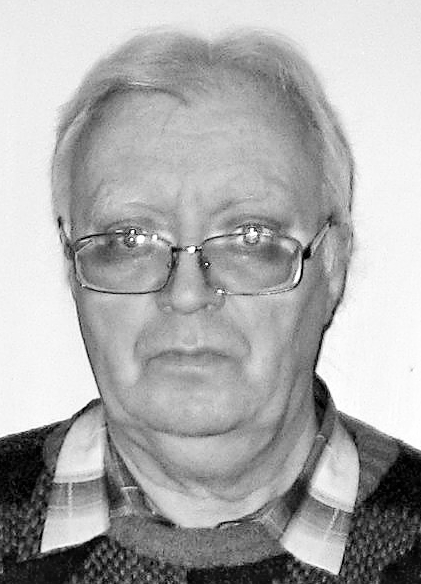 |
|
Dmitry A. Bobylev |
Recently, computer-based impedance meters and analyzers (the so-called virtual measuring devices) were developed primarily due to the efforts of D.A. Bobylev. These devices are especially useful when studying AC-exposed objects of different physical nature and measuring the parameters of their substitution circuit. Virtual devices are relatively cheap and, nevertheless, have metrological characteristics comparable to expensive autonomous devices. Therefore, they provide significantly greater opportunities in terms of the storage, display, and processing of measurement data (D.A. Bobylev).
Laboratory’s employees extend the theory of automatic meters for complex quantities to the case of objects represented by multidimensional bipoles. The basic design methods of such meters are systematized, their characteristics (speed and noise immunity) are compared, and practical recommendations on their implementation and use are given (D.A. Bobylev and L.P. Borovskikh).
Besides the mentioned researchers, a significant contribution to developing the theory and design principles of automatic transducers and meters for passive complex AC quantities PCV was made by Cand. Sci. (Eng.) A.A. Desova, Cand. Sci. (Eng.) A.M. Pavlov, Cand. Sci. (Eng.) V.L. Geurkov, and V.I. Kurchavov. Also, note the important role of B.G. Naumov, a highly qualified engineer, in manufacturing, debugging, and testing most devices created within the first research area.
In 1981, Dr. Sci. (Eng.), Prof. V.S. Popov joined the Institute. R&D works in the first area were extended to the class of measuring devices for active scalar quantities. V.S. Popov with his students and colleagues, Cand. Sci. (Eng.) E.V. Shumarov and Cand. Sci. (Eng.) Yu.V. Kashirin, developed, studied, and industrially implemented the new design principles of measuring devices for the integral characteristics of periodic signals and effective error correction and noise immunity algorithms for them.
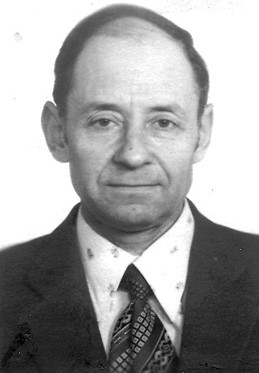 |
|
Vladimir S. Popov |
Laboratory’s employees working in the first area try to follow state-of-the-art achievements and systematize the existing knowledge. They are generally recognized experts in the area.
Studies within the second area focus on formalized design methods for transformation systems with given properties (ideally, a complete set of such systems), starting from upper-level solutions (conversion, error correction, and other methods). Therefore, conversion systems are considered, first of all, by abstracting from the physical nature of quantities and signals at the level of informational mathematical models (conversion structures) to develop a structural theory of conversion systems. The second research area originated in the first one: an original approach was proposed to consider the transducers of passive complex quantities. The approach consists in studying the relationship between the structural features of essential conversions of such quantities and the capabilities and properties of their transducers. As a result, several structural regularities were revealed in the design of conversion systems of various classes (transducers of complex and multidimensional quantities with balancing and quasi-balancing, direct conversion transducers). Also, new structural methods were proposed to improve the convergence, linearity, and sensitivity of transducers for the parameters of passive complex quantities with balancing measuring circuits.
The deductive structural theory of nonlinear data conversion (DC) systems, developed by Cand. Sci. (Eng.) V.A. Skomorokhov, gives fundamentally new opportunities in the second research area. Data are represented as a hierarchical system of functionally complete natural classifications of generating and generated DC structures. The theory is based on a concept that reflects the functional essence of the studied class of objects and contains information about possible objects of a given class in potential form. The theory has two fundamental logical principles: symmetry (duality) and invariance.
Further research in the second area is to develop a methodology for identifying and systematizing knowledge considering the current trends due to the Fourth Industrial Revolution, particularly its interdisciplinary nature. These studies involve the interdisciplinary generic inductive-deductive approach proposed by V.Yu. Kneller and A.M. Fayans. The approach serves to identify and typify the problems and their solution methods equally applicable in both technical and other spheres.
Members of the group actively participate in scientific and organizational work within different scientific councils, societies, editorial boards of peer-reviewed journals, etc. For example, V.Yu. Kneller worked in the governing bodies of the International Measurement Confederation (IMEKO) for over 25 years and was presented the IMEKO Distinguished Service Award (1991). He has been the Chief Scientific Editor of the journal Measurement. Control. Automation (ICA) since the first issue (1974). L.P. Borovskikh was a scientific editor of ICA for over 30 years. In recent years, he has been the Deputy Editor-in-Chief of the journal Control Sciences.
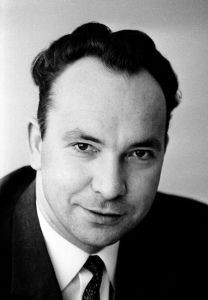 |
|
Vladimir A. Viktorov |
In the early 1960s, Academician B.N. Petrov’s Laboratory started creating consumption margin control means for rocket fuels and other liquid components in different flight conditions (including weightlessness) for aircraft of the rapidly developing space industry. Due to the effectiveness and prospects of those R&D works, the employees involved were reorganized into the independent Laboratory No. 48. Dr. Sci. (Eng.) Vladimir A. Viktorov became its Head. (Later, he was elected RAS Academician.) V.A. Viktorov proposed to solve these problems using the radio wave method: the quantities are indirectly estimated through the parameters (resonance frequency, Q factor, the amplitude of oscillations, etc.) of a special electrodynamic system (a sensitive element of the sensor). This method was applied for measurements in metallurgy, cryogenics, petrochemical production, and aerospace.
The design principles of high-frequency sensors of the fuel level and margin under uncertain distribution were developed (Cand. Sci. (Eng.) B.V. Lunkin). The results of that pioneering R&D works were published in two monographs: Viktorov, V.A., Rezonansnyi metod izmereniya urovnya (A Resonance Method of Level Measurement), 1969; Viktorov, V.A. and Lunkin, B.V., Izmerenie kolichestva i plotnosti razlichnykh sred (Measurement of the Amount and Density of Various Media), 1973.
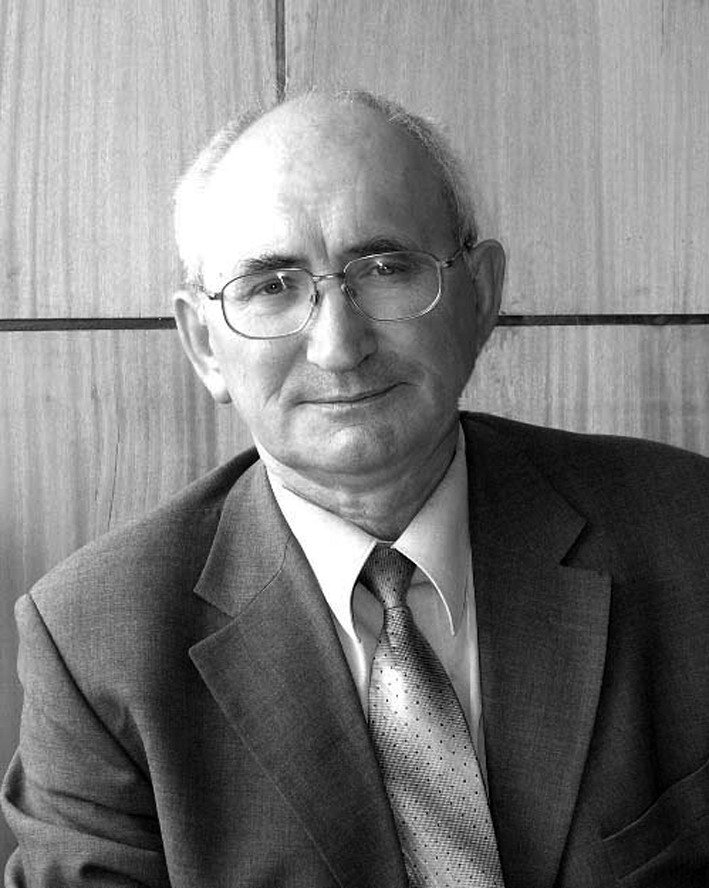 |
|
Boris V. Lunkin |
In the 1970s, under the Institute’s scientific and technical supervision, the Research Institute “Tekhnopribor” (Smolensk) and Teplopribor (Ryazan) mastered the serial production of high-frequency level gages and signalers for general industrial applications. They were completely based on domestic integrated microelectronics and were awarded, together with other radio wave sensors, the USSR State Prize in 1977. (V.A. Viktorov, B.V. Lunkin, and V.I. Mishenin became Laureates from the Institute.)
Among the achievements of the former Laboratory No. 48, note the theory of disturbance-invariant meters. Its foundations were described in the monograph Petrov, B.N., Viktorov, V.A., Lunkin, B.V., and Sovlukov, A.S., Printsip invariantnosti v izmeritel’noi tekhnike (The Invariance Principle in Instrumentation), 1976. The radio wave methods and meters developed in Laboratory No. 48 were reflected in two monographs: Viktorov, V.A., Lunkin, B.V., and Sovlukov, A.S., Vysokochastotnyi metod izmereniya neelektricheskikh velichin (The High-Frequency Method for Measuring Non-electrical Quantities), 1978; Viktorov, V.A., Lunkin, B.V., and Sovlukov, A.S., Radiovolnovye izmereniya parametrov tekhnologicheskikh protsessov (Radio Wave Measurements of Industrial Processes), 1989.
Since the early 1980s, R&D works on radio wave-based measurement systems have been supervised by Cand. Sci. (Eng.) Boris V. Lunkin. Today, he still leads the research group that moved from Laboratory No. 48 to Laboratory No. 2. The group participated in the following activities: solving practical measurement problems for metallurgy, cryogenics, the petrochemical industry, and aerospace; creating a ground-based measurement system to control the refueling of the Energia-Buran rocket-space complex. Laboratory No. 48 developed an onboard fuel control system for the Mir spacecraft (V.Yu. Fateev). Also, scientific and technical foundations were developed to design high-precision meters for the quantitative parameters of liquefied hydrocarbon gases, including level, density, the mass of liquid and gas, and their total mass (Dr. Sci. (Eng.), Prof. A.S. Sovlukov, jointly with Cand. Sci. (Eng.) V.I. Tereshin from Tekhnosensor (St. Petersburg)).
Besides the theory and applications of radio wave measurements, the Laboratory studies general issues of measurement and metrology. An original methodology was proposed to build an expert system for selecting the optimal measuring principle at the initial sensor design stage with given technical requirements. A metrological diagnosis method was developed for sensors in normal operating conditions (B.V. Lunkin).
Many-year research covers the following methods: multiparameter and invariant parametric measurements of substances, particularly with the uncertain phase state; measurements with microwave components used as functional sensor elements; measurements with auto-tuned sensors under varying quantities and (or) disturbances (A.S. Sovlukov).
The range of studies has expanded recently. New results were obtained on using miniature non-contact microwave radar sensors for measuring technological parameters. Onboard sensors for the autonomous positioning of land vehicles are in demand. Algorithms were developed to process Doppler signals for measuring the instantaneous velocity vector and direct displacement by two coordinates (Cand. Sci. (Eng.) D.V. Khablov).
Methods are developed to measure the parameters of radio-frequency sensors based on optimization algorithms (mainly stochastic approximation algorithms). The methods yield the optimum even in the case of disturbances. It was proposed to use a modified stochastic approximation algorithm combining Fabian’s algorithm (the rough and fast tuning to an optimum) and the Kiefer–Wolfowitz algorithm (the accurate tracking of this optimum) (V.Yu. Fateyev).
The corresponding results aroused interest abroad. Joint projects were implemented with research institutes and firms from the former Yugoslavia, Bulgaria, North Korea, and France.
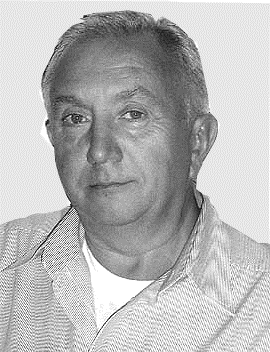 |
|
Vladimir V. Maklakov |
Dr. Sci. (Eng.) V.V. Maklakov (Head of the former Laboratory No. 54) developed protective identifiers for products made of different materials (organic, inorganic, and bioorganic) based on quantum radiophysical effects of hidden markers. The technology allows encoding identifiers of both individual products and batches of heterogeneous products. The markers can be nanostructured and do not disturb the appearance of products. This technology can be combined with modern hidden and multi-level information reading methods to develop a new method of identification and protection against counterfeit products, documents, information carriers, valuable items, etc.
To date, the current staff of Laboratory No. 2 has published more than 800 papers, including 22 monographs.
